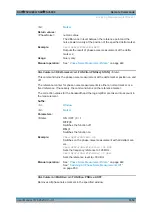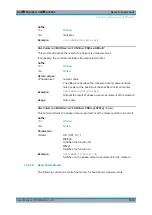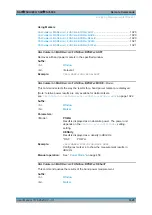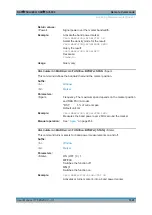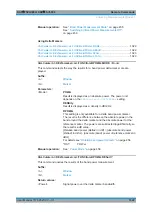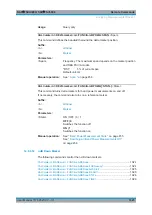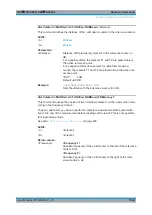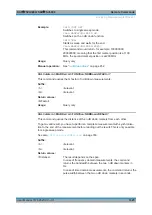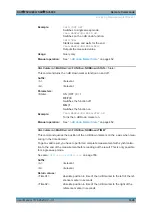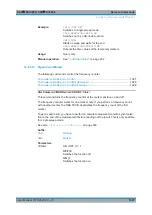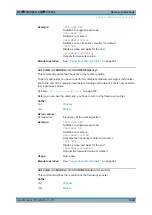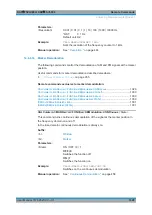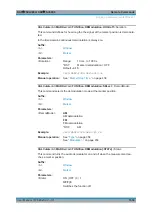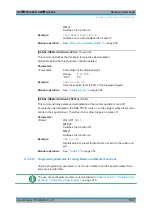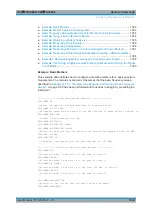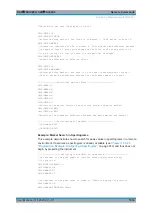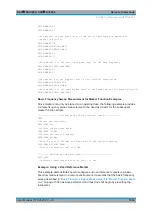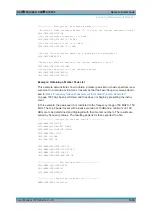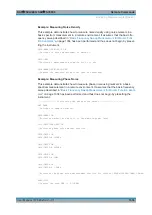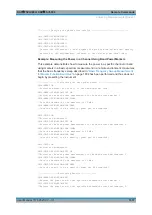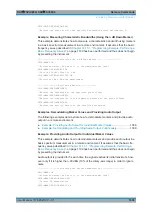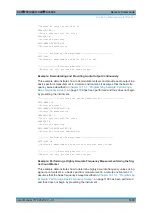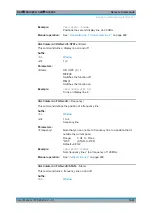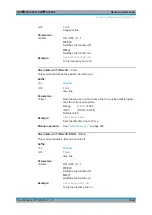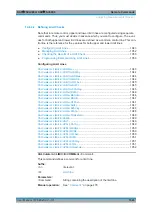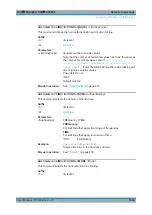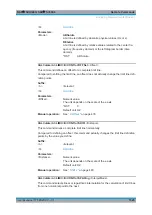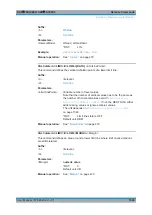
Remote Commands
R&S
®
FSVA3000/ R&S
®
FSV3000
1032
User Manual 1178.8520.02 ─ 01
..................................................................................... 1032
Example: Marker Search in Spectrograms
......................................................... 1033
Basic Frequency Sweep Measurement for Marker Function Examples
Example: Using a Fixed Reference Marker
........................................................ 1034
Example: Obtaining a Marker Peak List
..............................................................1035
Example: Measuring Noise Density
.................................................................... 1036
Example: Measuring Phase Noise
......................................................................1036
Example: Measuring the Power in a Channel Using Band Power Markers
Example: Measuring Characteristic Bandwidths (Using the n dB Down Marker)
Examples: Demodulating Marker Values and Providing Audio Output
Example: Performing a Highly Accurate Frequency Measurement Using the Signal
Count Marker
Example: Basic Markers
This example demonstrates how to configure and define markers for a basic spectrum
measurement in a remote environment. It assumes that the basic frequency sweep
described in
Chapter 14.15.1, "Programming Example: Performing a Basic Frequency
on page 1199 has been performed and thus does not begin by presetting the
instrument.
//--------------Configuring marker behavior ------------------
DISP:MTAB ON
//Marker information is always displayed in a separate table.
CALC:MARK:X:SSIZ STAN
//The marker moves from one pixel to the next instead of sweep points in manual op.
CALC:MARK:PEXC 6dB
//Defines a peak excursion of 6 dB.
CALC:MARK:X:SLIM ON
CALC:MARK:X:SLIM:LEFT 50MHz
CALC:MARK:X:SLIM:RIGH 150MHz
//Restricts the search area for peaks to the frequencies between 50 and 150 MHz.
CALC:THR -100dBm
CALC:THR:STAT ON
//Configures a threshold level for peak searches at -100 dBm.
//--------------Defining and positioning markers -------------
CALC:MARK1 ON
//Activates marker 1 and sets it to the peak of trace 1.
CALC:MARK2:TRAC 2
//Activates marker 2 and sets it to the peak of trace 2.
CALC:MARK3:X 150MHz
//Activates marker 3 and sets it to the freq. 150 MHz on trace 1.
CALC:MARK4:TRAC 4
//Activates marker 4 and sets it to the peak of trace 4.
CALC:MARK1:MAX:AUTO ON
//Moves M1 to the current peak of trace 1 after each sweep.
CALC:MARK2:MAX:NEXT
Analyzing Measurements (Basics)

